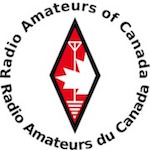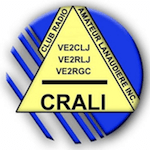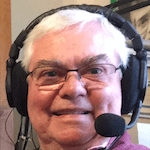How to Improve an Attic SWL Antenna
by Jim Wallace
(Annapolis, MD USA)

FRG-8800 back panel
I am looking to improve the performance of an attic SWL antenna that I have been using for more than 10 years.
I have a Yaesu FRG-8800. I have had the receiver for years and both work fine. I had occasional maintenance performed by a qualified repair shop.
I am looking to improve my reception. I listen only and do not transmit. I am using the AC ground supplied by my wall socket.
For more than 10 years now, I have used an end-fed 130 ft long wire antenna in my attic.
The antenna wire is bare stranded copper wire that I stapled to multiple 2x4’s in the attic to form a horizontal open rectangle. The attic, of our brick-walled single family home, is all wood and the roof is covered with shake shingles. No metal anywhere.
A 20 ft length of coax connects the antenna to the "Lo-Z" coax connector on the rear of the Yaesu FRG-8800. I soldered the coax center conductor directly to one end of the antenna bare wire. I am not using the shield of the 20 ft of coax at either end of the coax. I am not using a balun either.
I do, on occasion, pick up AM, LSB, USB and FM stations from around the world.
Due to condo rules I must have my SWL antenna in my attic.
Short of putting up a Yagi, I am looking for ideas to improve reception.
Answer by
Claude - VE2DPE
Owner/Editor of HamRadioSecrets.com
Solution Summary
You will be able to improve reception by eliminating the sources of signal loss, by removing a potential source of parasitic interference and by implementing signal enhancing measures.
Jim, your situation is a very interesting one. I'm fairly certain that many shortwave listeners would also like to improve the performance of their indoor SWL antenna.
The bad news is that your request comes in at the very bottom of Solar Sunspot Cycle 24. HF propagation is often poor to downright non-existent at times! This means that it might be difficult for you to notice any significant improvement in reception after you implement my recommendations.
The good news is that there are indeed a number of measures that you can take to improve the performance of your end-fed attic SWL antenna - to ensure that it will capture its fair share of the HF RF energy, when it is available, even if we are at the bottom of Solar Sunspot Cycle 24 as I write this.
Things can only improve from here, especially if you implement some (or all) of my recommendations!
Background Context
Your antenna installation dates back to the end of Solar Sunspot Cycle 23. HF propagation had been dwindling down to next to nothing during the period between 2007 and 2009.
Then Solar Sunspot Cycle 24 took over in 2010. HF propagation conditions began to gradually improve ... to eventually reach a peak during the period between 2012 and 2014.
We all experienced improving propagation conditions from 2010 to 2014 ... and fair to good, if slowly decaying, propagation conditions until about 2017.
In other words, your antenna was capturing HF signals because they were strong enough to overcome your antenna's shortcomings most of the time.
Now that Solar Sunspot Cycle 24 is entering its minimum phase (2018), HF propagation conditions are at a minimum, and HF signals are weak.
Now, more than ever, your antenna needs to be up to the task.
The following information will enable you to bring the necessary improvements to the installation of your attic SWL antenna.
First, you mentioned that you plug the center conductor of the coax in the coax connector in the back of your receiver. That's a low impedance (50 ohms) connection - labelled Lo-Z.
If you are not going to implement any of the solutions that I will outline for you, then I suggest that - at least - you connect the center conductor of your coax to the connector labelled Hi-Z on the back panel of your FRG-8800.
Why?
The end-fed antenna that you are using is much more likely to present a complex high impedance than a low impedance to the receiver.
It is important to minimize impedance mismatch between your attic SWL antenna system and the receiver input. Impedance mismatch means poor RF energy transfer from the antenna to the receiver.
You can go back to using your receiver's Lo-Z coaxial connector after having implemented the solutions outlined in detail on this next page.
Return to Ham Radio Antennas Rave Accounts.
73 de VE2DPE
Claude Jollet
104-30 avenue des Berges,
Notre-Dame-des-Prairies, Québec, Canada J6E 1M9
QTH Locator: FN36gb
Disclosure
If
you make a purchase via a link on this site, I may receive a small
commission on the transaction, at no extra cost to you. Thank you!
(One word queries work best)
FOUND THIS
SITE
USEFUL?
VE2DPE
Is a member
in good standing
of



Also a proud member of an international community of solopreneurs
using SoloBuildIt!
(SBI!)
to promote my self-published eBooks
since 2005.
See my review
of this unique product for online businesses.
CQ CQ CQ
If you have a question, a comment or a topic you would like me to cover, please do not hesitate to ask here.


